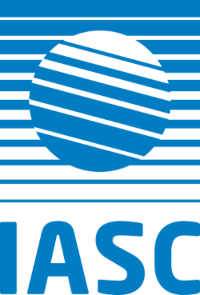Project Report
The Polar Archaeology session entitled “The Object: Regional Messenger, Global Message” was a fruitful sharing of various archaeological investigations that are currently ongoing or were previously successful in circumpolar regions. Participants were asked to present an archaeological ‘object’ that embodied interdisciplinary research and an indispensable polar aspect. During the session, not only were material objects such as bone tools and carvings from the high Arctic and faunal remains from hunter-foragers in Greenland presented but entire archaeological structures, such as a 19th century cruciform house in Tuktoyaktuk, Nunavut, Canada as well as a Nunalleq (Yu’pik house) in the Yup’ik Culture Area or Southwest Alaska. Ongoing investigations into the importance of marine species in the North Atlantic and completed work demonstrating the value of the digital data revolution in Arctic contexts were presented as well.
There were several highlights of the session:
- An overarching theme centered on collaborative indigenous community involvement and the co-production of knowledge with local indigenous. Not only was this a constructive discussion point later, but presenters demonstrated that integral to the polar research is the involvement of circumpolar peoples: to de-colonize research, improve data resolution, and benefits of reciprocal exchange of information about tangible heritage.
- The possibilities for interdisciplinary research due to the digital documentation revolution were also a common thread in many talks such as logistical issues to access the Arctic, and now with Corona virus pandemic. An increase in digital approaches to data acquisition not only has allowed for more archaeological sites to be located but increased global, interdisciplinary collaboration.
- Climate crisis-related impacts in polar archaeology were highlighted as tangible heritage archives are increasingly threatened, whether it is due to rising sea levels and coastal erosion, shorter seasons and loss of preservation, or the endangered indigenous lifeways that allow for ethnoarchaeological research or knowledge coproduction.
Finally, the spectrum of ‘objects’ presented was a highlight in and of itself, demonstrating value of archaeological sciences and tangible cultural heritage as a central interdisciplinary polar research agenda.
Oral Presenters
“A 19th century Inuvialuit House: Messenger of profound cultural and climatic change,” Max Friesen
“Carving an Ipiutak identity. A 1. Millenia AD burial site at Point Hope in Alaska,” Claire Houmard
“Impacted archaeology and communities in a changing environment: a view from SW Alaska,” Edouard Masson-MacLean, Rick Knecht, Charlotta Hillerdal, Alice Watterson, Anna Mossolova, Claire Houmard and Kate Britton
“Seeking the origin of Bear Ceremony,” Hirofumi Kato – Cancelled
“Sharing the game. Archaeological evidence of hunting ethics and strategies – past and present,” Ulla Odgaard
“The Central North Atlantic Marine Historical Ecology Project,” George Hambrecht
E-Posters
“Polar CHESS, Cultural Heritage and Environmental Scientific Studies,” Bryan Lintott
“The actualisation of past architecture in Arctic’s future urban landscape,” Asta Mønsted
Date and Location:
20-26.03.2021 I ASSW2021 Online
IASC Working Groups / Committees funding the Project:
- Social & Human WG
- Terrestrial WG
Project Lead
Year funded by IASC
2020
Project Status
Completed
